
Growing indoor plants is a great way to add color and vitality to your home. In addition to their beautiful appearance, many houseplants are beautifully fragrant, making your home smell fantastic too. I’ve picked 15 of the best smelling indoor plants, and some of my all-time favorites to share with you in this article.
My favorite thing about growing fragrant indoor plants is that you can bring a little of the outdoors inside. Some plants smell even more wonderful indoors than they do outside!
Enjoy my guide to the 15 best smelling indoor plants that will leave your home smelling divine!
Twinkle Orchid (Oncidium)
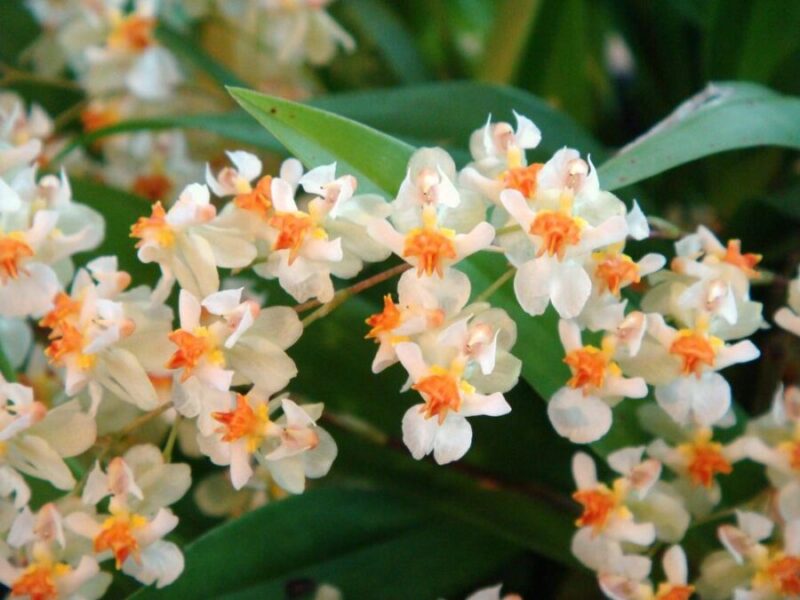
Though orchids in general are not known for their fragrance, this Oncidium hybrid blooms with hundreds of dime-sized flowers that emit a spicy vanilla scent.
Despite their reputation, orchid species aren’t too difficult to care for provided you give them plenty of bright, indirect light. Choose a spot with high humidity and temperatures between 70 to 85°F during the day and 55 to 65° at night. Because twinkle orchids are epiphytes, pot them in an orchid mix of fir bark and peat moss.
Stephanotis (Marsdenia floribunda)
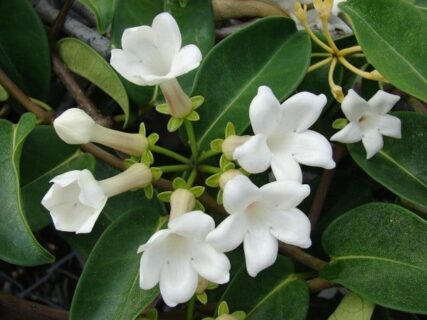
With attractive dark green leaves that look good no matter the season, stephanotis is a vining plant that produces clusters of waxy, sweet smelling flowers in spring and summer.
As one of the easier to grow indoor flowering plants, stephanotis just needs a good amount of bright light and a support to climb on.
Lemon Balm (Melissa officinalis)
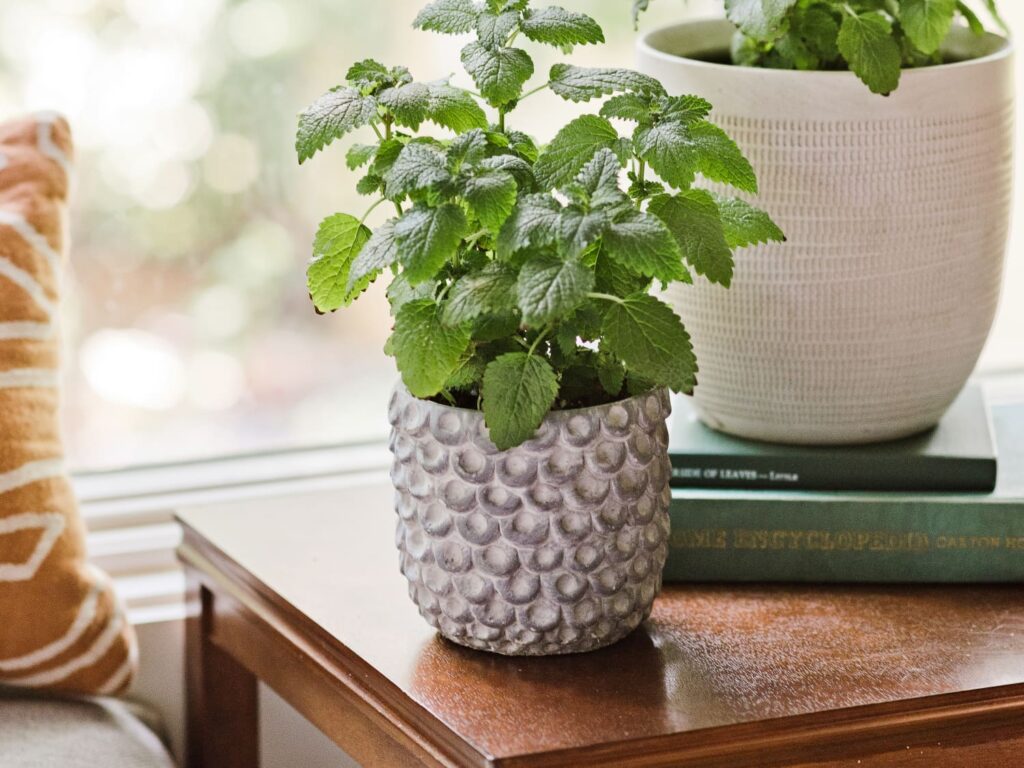
Lemon balm is a bushy, perennial herb of the mint family. Though humble in appearance, when lemon balm’s serrate, oval leaves are lightly brushed or rubbed between the fingertips, it releases a fragrant lemony scent.
Beyond its aromatic properties, lemon balm is an eminently useful specimen to have around. Clip the leaves often to flavor soups, salads, sauces and ice cream. You may also steep the leaves to make lemon balm tea, a therapeutic beverage for lifting mood, improving sleep, relieving pain, and more.
As a houseplant, lemon balm is easy to grow and very low maintenance. Place it on a window ledge that receives up to 5 hours of direct sunlight each day.
English Lavender (Lavandula angustifolia)
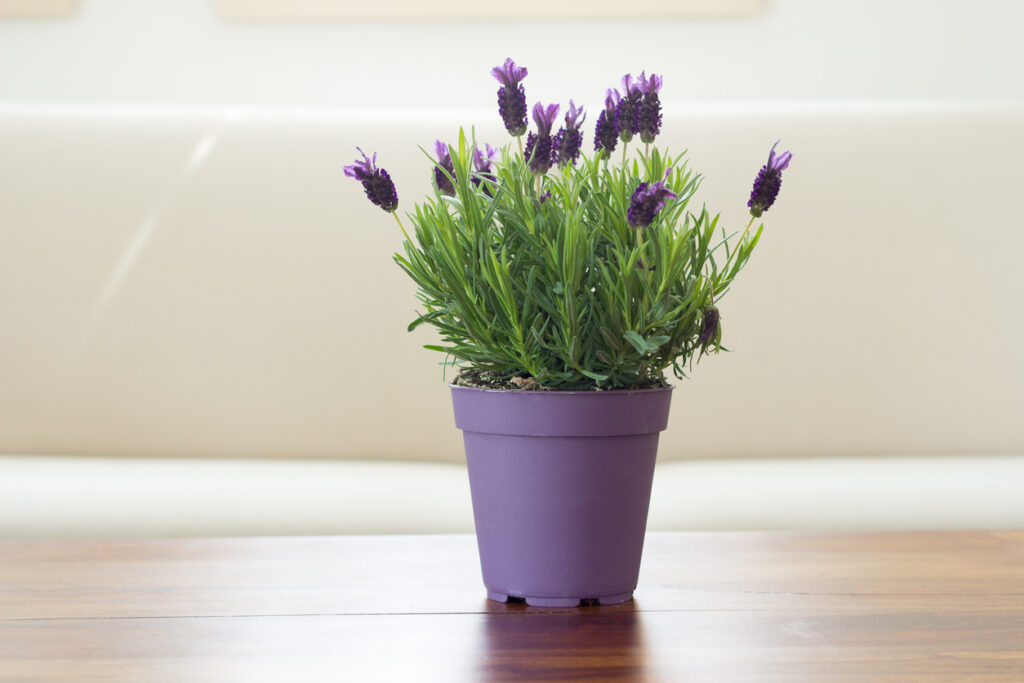
The purple spiked plant beloved by natural health enthusiasts, lavender is another herb with dozens of wonderful benefits for health and home.
Though there are several types to choose from, English lavender is one of the more aromatic varieties. Keep it blooming by providing lots of sunlight and good air flow. It also prefers a spacious pot with a couple inches between plantings and monthly feedings.
White Jasmine (Jasminum polyanthum)
A twining vine that produces clusters of star-shaped flowers, white jasmine provides the sweet smell of summer during the winter months. It is also known as pink jasmine or many flowered jasmine.
Keep white jasmine hap
py by placing it in a sunny, humid spot. It looks lovely in a pot or hanging basket, just be sure to add a stake or trellis so its clinging vines have something to grasp on to.
Gardenia (Gardenia jasminoides)
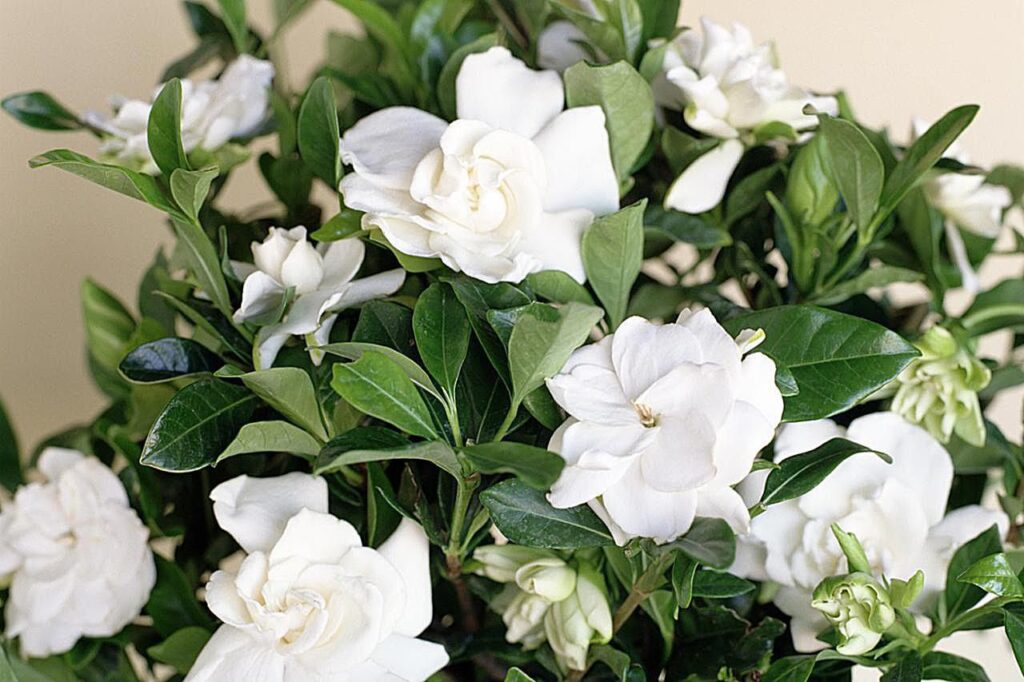
Although it made our short list of the worst plants to grow in your garden, gardenia might be tough but she sure is beautiful. If you are up to the challenge, this gorgeous diva just might reward you with a show of exquisite, sweetly fragrant blooms.
Gardenia requires bright, indirect light and temperatures above 60°F at all times. It prefers acidic soil, bi-weekly feedings, and a consistently moist growing medium.
Citrus Tree (Citrus spp.)
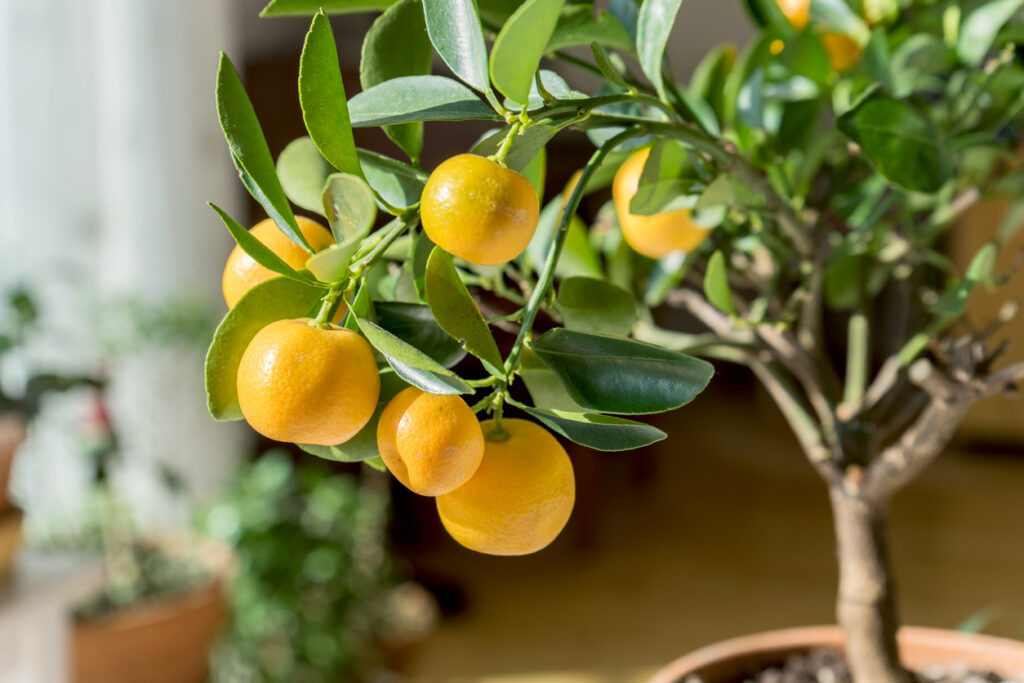
Lemon, lime, orange, and other citrus fruit plants can add fruity scents to your indoor garden. Dwarfed into miniature trees, citrus needs sunshine and warmth to produce small fragrant blossoms that smell like their fruit.
Citrus plants tend to be thirsty so give them a good watering regularly and feed with an all-purpose fertilizer in spring and summer.
While you can grow citrus plants from seed, you will have to wait around six years for it to mature enough to bloom.
Scented Leaf Geranium (Pelargonium spp.)
Though scented geraniums bear delicate 5-petaled flowers in summer, their strong fragrance is released when the thick, fuzzy foliage is touched or rubbed.
It comes in several scents – P. capitatum (rose), P. crispum (lemon), P. denticulatum (pine), P. fragrans (apple), P. grossularoides (coconut), P. tomentosum (chocolate mint).
Whatever variety you choose, place scented geranium in a sunny spot that receives at least five hours of sunlight per day.
Eucalyptus Tree (Eucalyptus cinerea)
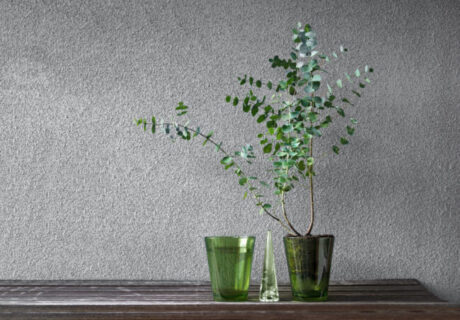
Also known as silver dollar tree and argyle apple, eucalyptus emits a minty, sweet, and uplifting aroma. The silvery, blue-green foliage also provides a nice visual contrast among the pure greens of other houseplants.
Eucalyptus plants are incredibly speedy growers, maturing from seed to shrub in a single growing season. Indoors, they can be pruned into a bushy form or trained to look like a tree. Being native to Australia, it needs full sun to thrive. Feed weekly throughout spring and summer with a low nitrogen fertilizer.
Sweet Bay (Laurus nobilis)
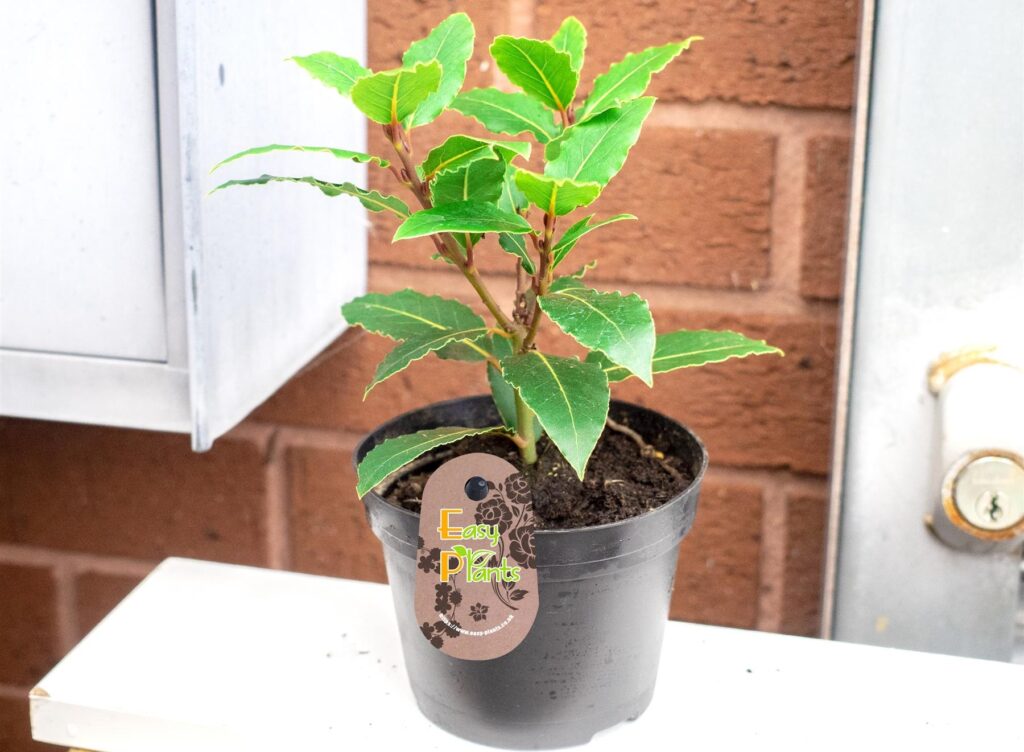
Sweet bay is a non-fussy evergreen tree with thick, glossy, elliptical leaves. Its foliage gives off an herbal scent with slight floral notes. Clip off the leaves from time to time to add flavor to soups, sauces, and stews.
Place sweet bay plants in a spot that receives full sun to part shade.
